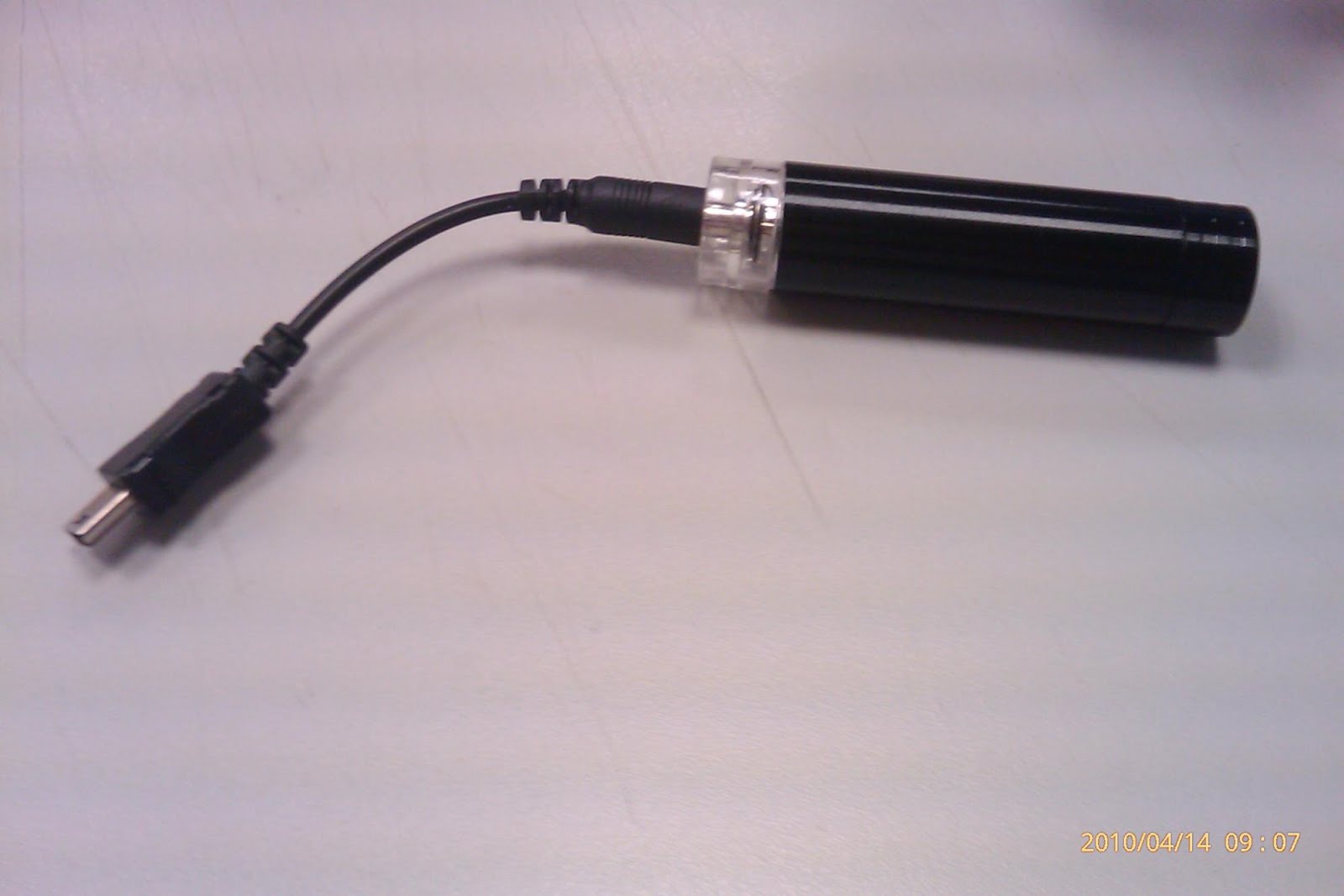my attempt at Kinetic handphone charger.
I received this toy as my christmas present (some present exchange game that too difficult for me to comprehend) last year. It is a handphone charger that is powered by a 1.5v AA battery. I tried it on my HTC magic... and it works. 1AA battery can charge about 5% on my phone.
I was tinkering with the idea of marrying the circuit in the AA battery charger with a kinetic to electric generator (aka the shaker) which works on the concept of rare earth magnet's magnetic flux is cut when it is moved in and out of a coil of enamel wires. http://en.wikipedia.org/wiki/Faraday's_law_of_induction.
The basic construction of the shaker is a rare earth magnet, sliding in and out of a magnetic tube that is coiled by some enameled wires.
I also need a circuit that made up of 4 diodes (1N5819) and a capacitor (10000uF) to make the output into a constant DC. A voltage regulator LM29317 can be added too. Ai Ling the TSO is kind enough to provide me the components. thx!!. This circuit gave me about 3v across the load.
Since the AA charger only needs 1.5v, if I can supply constant 1.5v to the AA charger through my shaker, I would be able to charge my handphone for FREE!!! (assume cost of energy acquired from food is FREE)
I got my rare earth magnet from a shop in sim lim tower basement 1 for $18. Use the remaining acrylic tube from my light saber project and now I need to coil 1400 revolutions of enameled wire on the acrylic tube. Ask around the lab TSOs for it and Hamzah show me some which is left over from a previous project. Now the challenging part is how am I going to coil 1400 times by hand!?
My first attempt trying to coil by hand... very tiring. Wanted to use a power drill, but none of the bits fit my acrylic tube......and I lost count after the 300th revolution.....
My 2nd attempt, with the power drill. The bit is a knob I salvaged from a variable resistor........
Apparently, there is this antique coiling device that is sitting somewhere in the cupboard at T12A406. I only discovered it after I have done coiling with the power drill....
I have varied the simple circuit of the above to provide better charge storing (2x capacitors) and capacitor to stabilize the input of the LDO .
After couple of shakes............ not to bad, the voltage is 4.43v and current in the range of 0.9~1mA.
More then enough to power an LED, but how about charging my phone through USB????!!!
USB on my laptop provides 5v and 100mA per port to charge my phone. The current might be an issue here
After hooking up the output of this circuit to the input to the circuit of the AA battery charger then connect to my phone through the USB and after many many many many many many many many violent shakes, my phone is still not charging....
Voltage across the load is still 0v after many violent shakes. the capacitors are not building up charges as fast as the discharge....
My hypotheses might be WRONG!!!
with a sore arm, a dented ego and a finite FREE time to play with my hobby,
akan datang ...................

5 comments:
hi Shinajaran, i have the same idea in mind, or atleast i "had". but i don't intend on giving up. i'm sure if you ise a thicker guage wire and probable bigger magnets and not to mention acrylic tube, i'm sure the current will be more. anyway, goodluck and don't give up, you are 1 step closer to success. All the Best.
hi anonymous,
thanks for the idea. I do not have spares for awg 16 enameled wire on hand. Otherwise I would have tried.
The post is left open ended, to experiment with the idea of "crowd sourcing". that is on my next paper I am writing.
don't you think the problem is feeding dc power to your battery charger? The supposed input of your battery charger is AC? Why not connect a usb or appropriate type connector and feed directly to the phone. I am making similar project with 2 magnets opposing each other with rubber bumpers at the ends. I used super capacitor to store the dc voltage with a resistor connected in series.
Nice charger. But will it support a wooden phone case? I am using a wooden phone case. Luckily from where I have got my cover there were no such reviews like this. But still just asking.
Wireless chargers can be considered better for the ecosystem than wired chargers due to several factors. They reduce the need for disposable cables, potentially decreasing electronic waste. Moreover, wireless charger often employ more energy-efficient technologies, contributing to lower overall energy consumption. Additionally, the convenience of wireless charging may encourage users to keep devices longer, reducing premature replacements.
Post a Comment